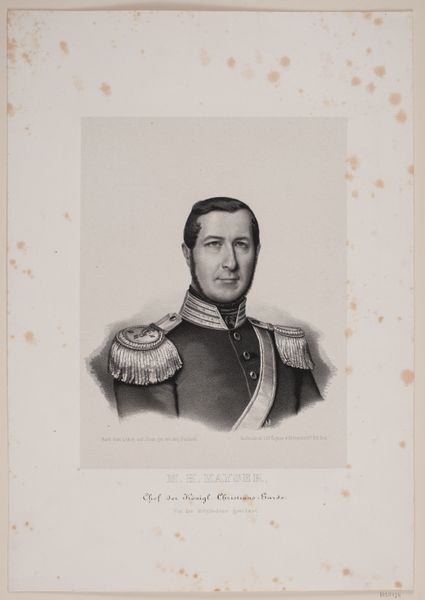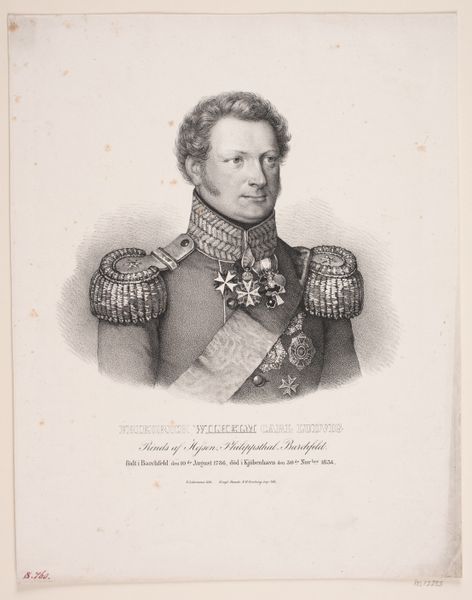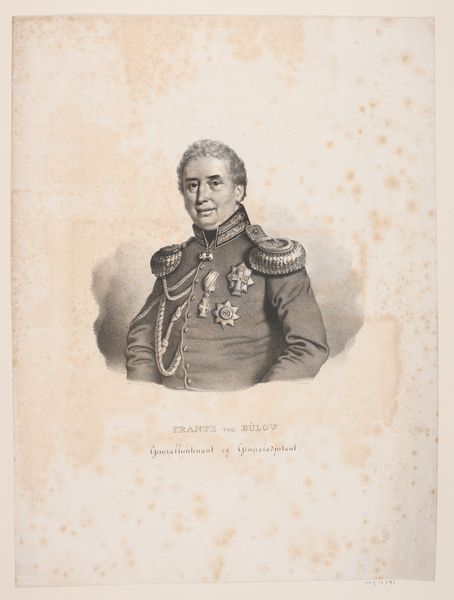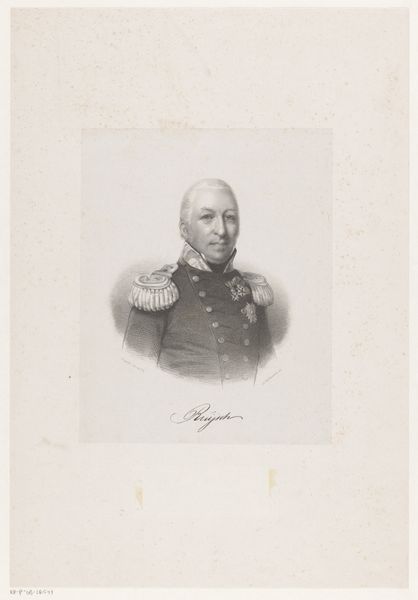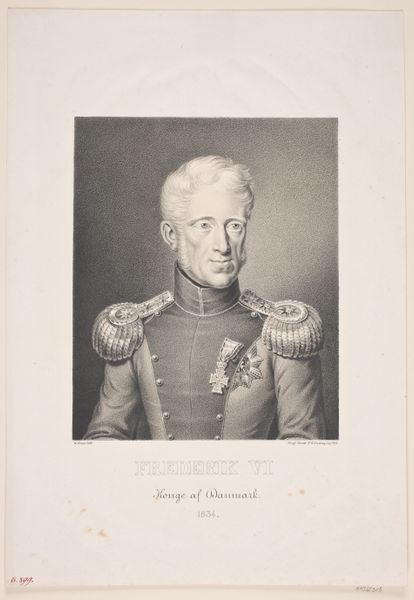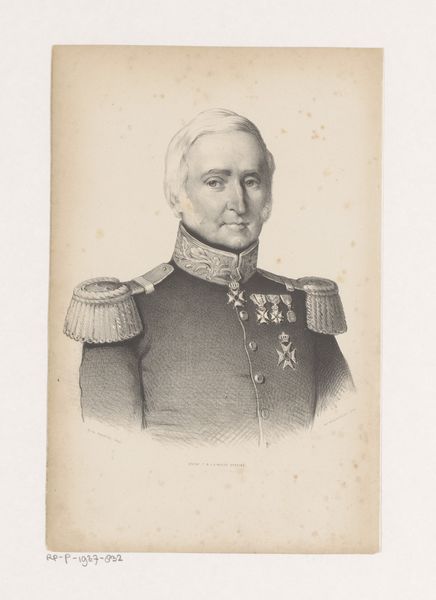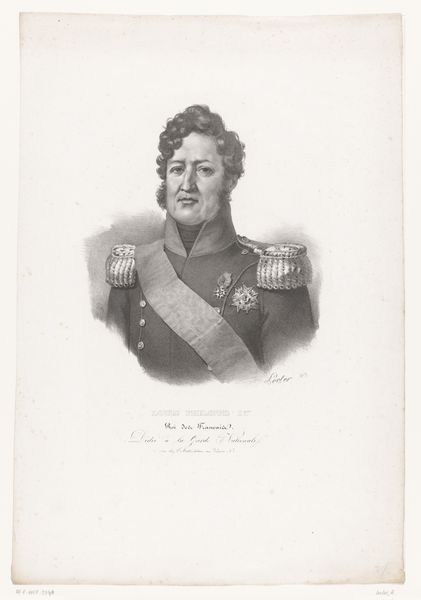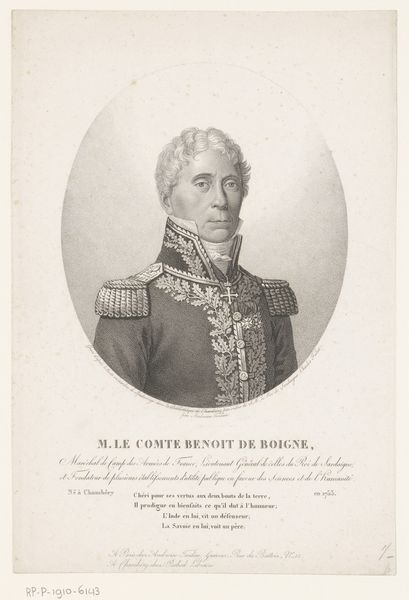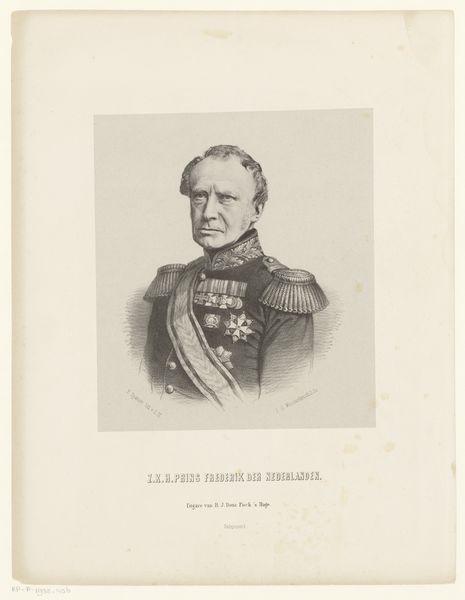
engraving
#
16_19th-century
#
old engraving style
#
history-painting
#
engraving
#
realism
Dimensions: height 450 mm, width 310 mm
Copyright: Rijks Museum: Open Domain
Editor: This is a portrait of Hendrik Merkus de Kock, made in 1832 by Cornelis Kimmel. It's an engraving. The level of detail is quite striking given the medium, especially in the rendering of his uniform and decorations. What strikes you when you look at it? Curator: Well, I see more than just a portrait. I see a manufactured image designed to reinforce power. Consider the material itself: engraving, a printmaking technique. Prints are reproducible, distributable. This isn't a unique oil painting meant for a single wealthy patron. It's meant to disseminate an image of authority. Who would have consumed this image? What purpose did it serve within the broader context of Dutch colonial power? Editor: That’s an interesting perspective! I was focused on the realism, the details…the artistic skill involved in creating the engraving. I hadn’t really thought about its role in the wider distribution of power and status. Curator: And consider the labor involved. Kimmel didn't just create this; an entire system of artisans, printers, and distributors was required. The social context of artmaking matters just as much as the aesthetic result, sometimes more. It wasn't solely Kimmel's artistry but the complex web of material production and consumption of art and power. The medals, the uniform…they are rendered painstakingly, designed to reflect military prowess but it is not a single act of "genius" that made the work powerful. It is collaborative manufacturing that made his achievements memorable. Editor: So, instead of focusing on the individual portrayed or the artist’s technique, you're drawn to the industrial side, the processes and societal functions inherent in creating and sharing the portrait. Curator: Exactly. The material conditions of its creation and circulation are inseparable from its meaning. Think of this print not just as art, but as a commodity embedded within a system of imperial expansion. Editor: I definitely learned a lot. It's a different way to appreciate and consider art. Thanks! Curator: It's been my pleasure! I have expanded my own considerations through our talk as well!
Comments
No comments
Be the first to comment and join the conversation on the ultimate creative platform.
